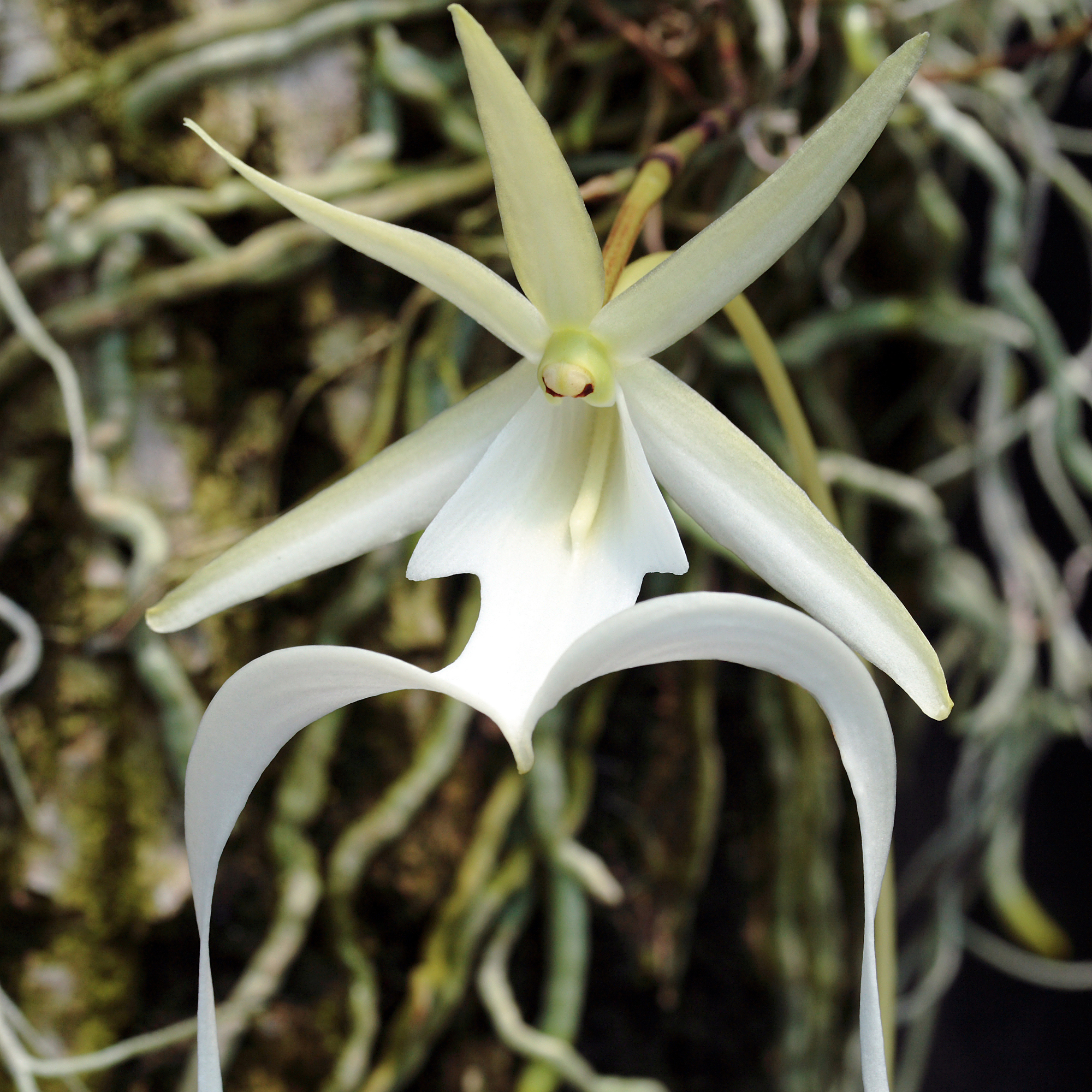
The elusive Ghost Orchid, which is endangered and seldom blooms in the wild, has finally flowered in the United Kingdom for the first time at Kew Gardens. The Orchid Conservation Display at Kew was a collaborative effort involving J.P. Wright Company of Florida, Grow Tropicals UK, the Royal Botanic Gardens, and other groups. The Ghost Orchid, scientifically known as Dendrophylax lindenii, is shrouded in mystery and fascination. They grow leaflessly in the dark and shadows of South Florida and Cuba and blossom in the night, giving off an alluring fragrance. These orchids are called “tree guardians,” as their roots protectively enfold their host trees. World War II logging decimated ghost orchid populations in Florida, leaving only around 1,500 plants in South Florida and fewer than 500 in Cuba. Habitat destruction is the primary contributor to the decline of ghost orchids worldwide. As part of an effort to highlight the critical role of orchids in global ecosystems and the need to conserve them, the Orchid Conservation Display at Kew provides information on recent efforts to locate and safeguard the rare Florida Ghost Orchid and other endangered orchids that make up Kew’s living collection. RBG Kew has the oldest collection of living tropical orchids globally, dating back to 1787, and the largest Orchid Herbarium, containing over 400,000 preserved specimens. With roughly 8,000 plants representing around 1,300 species, the living orchid collection at RBG Kew is an indispensable resource for the scientific community. Furthermore, the care of this collection is entrusted to Kew’s team of highly trained horticulturists, demonstrating the interdependence of horticulture and science. RBG Kew, one of the world’s most biodiverse locations, serves as a centre of excellence for applying scientific knowledge about plants and serves as the foundation of Kew’s core objective.

The Royal Botanic Gardens, Kew holds an annual Orchid Festival to honor the importance of orchids in environmental health. These delicate plants are often used as indicators of ecosystem health, making their disappearance from an area a concerning sign of environmental degradation. The festival takes place in the Princess of Wales Conservatory, which showcases innovative designs and sculptures created from over 5000 orchid specimens. This year’s festival was inspired by the beauty and biodiversity of Cameroon, a country rich in orchid species, some of which are so rare that their locations must be kept secret for their protection.

The Royal Botanic Gardens, Kew is a well-known scientific organization and conservation charity that is respected globally for its plant and fungal collections, sustainability efforts, and expertise in biodiversity conservation. Kew’s researchers and partners are at the forefront of battling against the loss of biodiversity and discovering natural solutions to the climate crisis, using five primary scientific priorities outlined in Kew’s Science Strategy 2021-2025. In addition to being a top London attraction, Kew Gardens covers 132 hectares of beautifully landscaped gardens, and Wakehurst, Kew’s Wild Botanic Garden and “living laboratory,” attracts more than 2.5 million visitors each year. Kew Gardens was designated as a UNESCO World Heritage Site in July 2003 and commemorated its 260th anniversary in 2019. The Millennium Seed Bank, the world’s largest wild plant seed bank and a protection against the negative consequences of climate change and loss of biodiversity, is housed at Wakehurst. RBG Kew gets roughly one-third of its funding from the Government through the Department for the Environment, Food, and Rural Affairs (Defra) and research councils. Donations, memberships, and commercial activities such as ticket sales provide additional funding for RBG Kew’s important scientific and educational endeavors.

